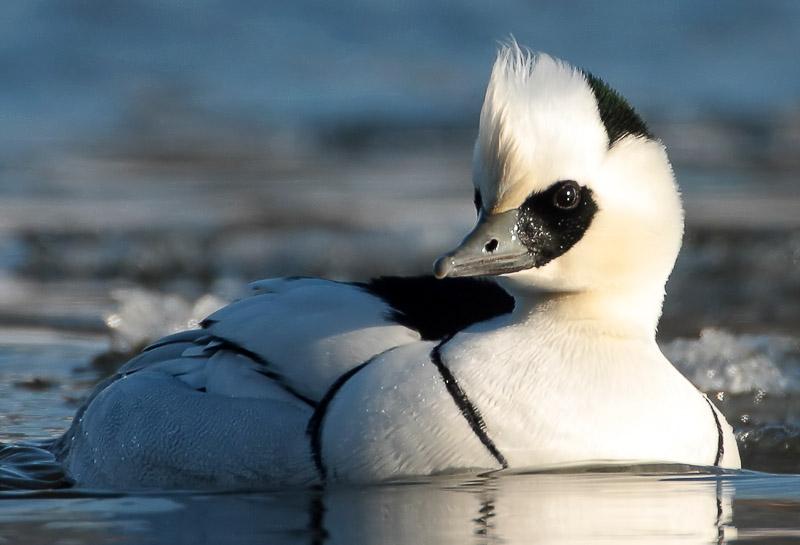
Smew(Mergus albellus)
Phylum —chordata
Class — aves
Order — anseriformes
Family — anatidae
Genus –mergellus
Appearance
The drake smew, with its "cracked ice" and "panda" appearance, is unmistakable, and looks very black-and-white in flight. The females and immature males are grey birds with chestnut foreheads and crowns, and can be confused at a distance with the ruddy duck; they are often known as "redhead" smew. It has oval white wing-patches in flight. The smew's bill has a hooked tip and serrated edges, which help it catch fish when it dives for them.
The smew is 38–44 cm (15–17 in) long, with a wingspan of 56–69 cm, and a weight 450–650 g.
Habitat
This species breeds in the northern taiga of Europe and the Palearctic. As a migrant, smew leaves its breeding areas and winters on sheltered coasts or inland lakes of the Baltic Sea, the Black Sea, northern Germany and the Low Countries, with a small number reaching Great Britain (for example, at Dungeness), mostly at regular sites.
Behavior
It is a shy bird and flushes easily when disturbed.
The smew migrates in groups, flying in an oblique line and V-formation. The flight is direct, fast and noiseless with rapid wingbeats.
Diet
The smew feeds on aquatic insects and small fish.
Reproduction
It nests in tree holes, such as old woodpecker nests.The smew breeds in May and lays 7-11 cream-colored eggs, incubated by the female for 26-28 days. Ducklings leave the nest soon after hatching and learn to fly within about 10 weeks.
The maximum known age of smew in Europe is more than 10 years.
In captivity
In captivity, this duck needs clean water that is deep enough to dive, at least 50 cm. It is nice to watch these ducks, especially when they are diving, but they are not suitable for beginners in poultry breeding. Smews consume a lot of protein food, an easy way to provide the necessary amount of protein in their diet is to breed minnows and release them into the pond where the ducks are kept. Keepers should be careful in order to prevent hybridization with other ducks.
Smews lay eggs in captivity quite late in the second half of May. They lay six to nine eggs and nest in boxes raised above the ground. The female can lay two clutches per season, but can only hatch one. You can get two clutches and artificially incubate them. Ducklings are oftentaken from the female as soon as they dry out after hatching, ducks do not feed ducklings in captivity, with rare exceptions. Usually special feeds are used for young waterfowl, you can give live larvae of flour beetles and small fish to stimulate the ducklings. Even small ducklings can dive.
 Russian
Russian
 English
English
























